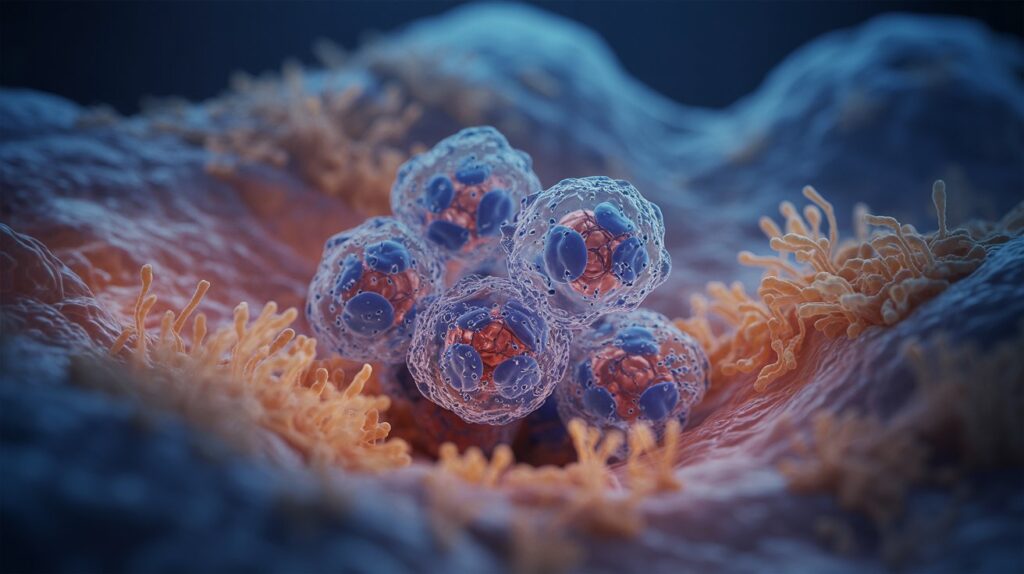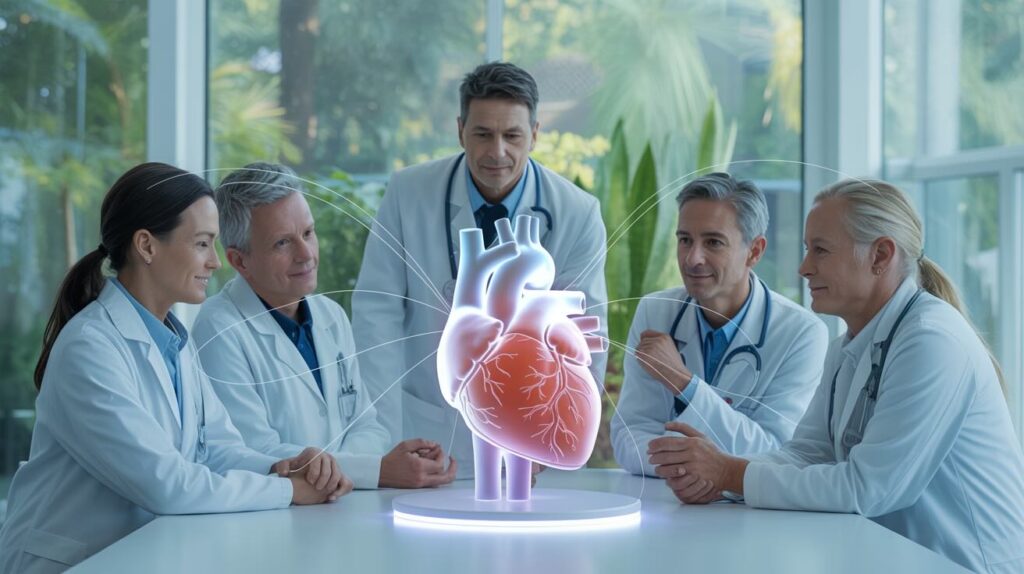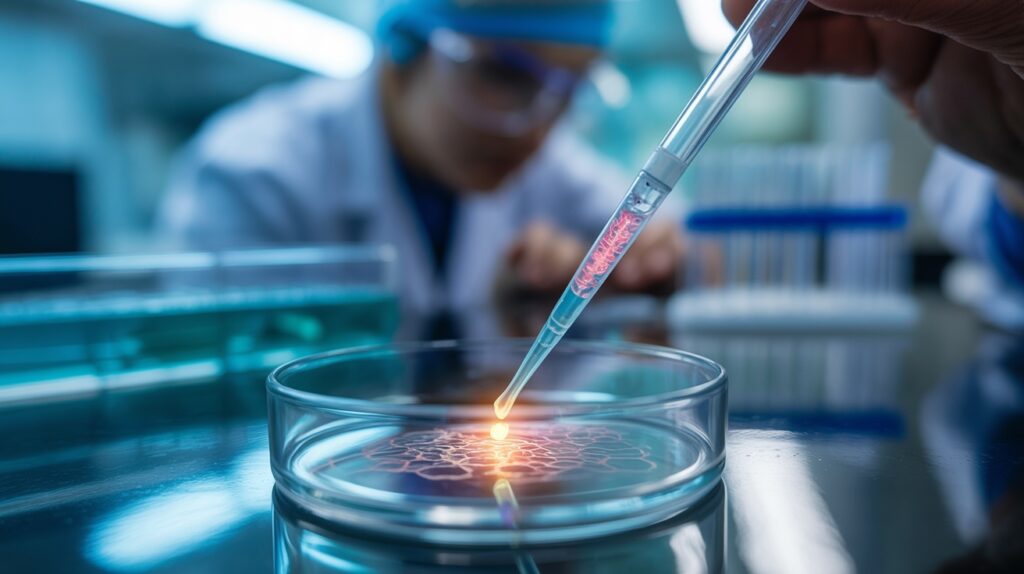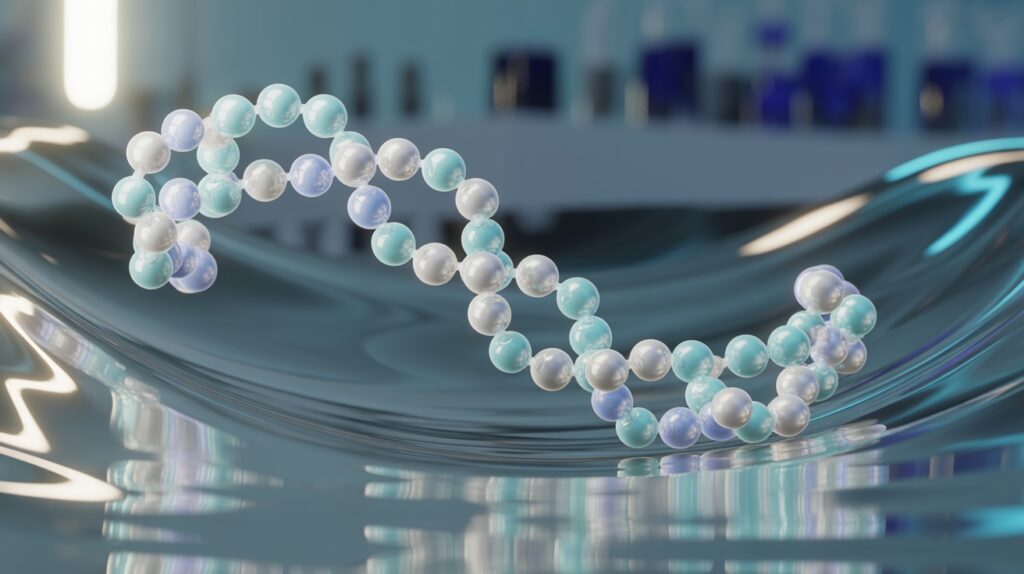
Regenerative Medicine
Key Takeaways
- The healing journey unfolds gradually over months, with many experiencing lasting results for years
- Dr. Cherdack combines decades of experience with cutting-edge technology and ethical standards
- Regenerative medicine activates your body’s natural healing abilities instead of just managing symptoms
- Dr. Cherdack’s whole-body approach addresses root causes through a collaborative team of specialists
- Advanced therapies include stem cell treatment, PRP, peptide therapy, and hormone optimization
- Each patient receives a comprehensive evaluation and personalized treatment plan
Introduction to Regenerative Medicine: The Future of Healing

Regenerative medicine represents a revolutionary frontier in healthcare—a paradigm shift from simply managing symptoms to activating your body’s innate healing capabilities. At its core, this approach focuses on repairing, replacing, or regenerating human cells, tissues, and organs to restore normal function lost due to age, disease, damage, or congenital defects.
Dr. Joel Cherdack and his team stand at the forefront of this medical revolution. With decades of dedicated practice and research, they’ve pioneered innovative approaches that combine cutting-edge regenerative techniques with whole-body wellness principles. Their vision extends beyond treating isolated symptoms—they seek to restore optimal function by addressing the complex interplay of biological systems that contribute to health and disease.
Your body possesses remarkable self-healing capabilities that often go untapped in traditional medical approaches. Every day, it replaces billions of cells, repairs minor tissue damage, and fights off potential threats. Regenerative medicine amplifies these natural processes, providing the biological building blocks and environmental signals needed to accelerate and enhance healing where it has stalled or become insufficient.
This shift represents not just a new set of medical techniques, but a fundamentally different philosophy of care—one that recognizes the body’s inherent wisdom and works in harmony with natural processes rather than overriding them. For patients suffering from chronic conditions, degenerative diseases, or persistent pain, this approach offers new possibilities for healing and recovery that extend far beyond symptom management.
The Science Behind Regenerative Medicine

At its core, regenerative medicine represents a paradigm shift in how we approach healing. Unlike traditional medicine that often focuses on symptom management, regenerative approaches aim to restore, replace, or regenerate damaged cells, tissues, and organs to their normal function.tent Here
The Building Blocks of Healing
Your body is naturally equipped with remarkable repair mechanisms. When injury occurs, a cascade of cellular activities initiates the healing process. Specialized cells rush to the damaged area, inflammation helps clear debris, and growth factors signal cells to multiply and rebuild tissue. Regenerative medicine works by amplifying and optimizing these innate processes.
The human body contains various types of cells with regenerative capabilities. Among the most powerful are stem cells—unique cells that can differentiate into specialized cell types and self-renew, creating more stem cells. These remarkable cells serve as the body’s internal repair system, dividing essentially without limit to replenish other cells as long as the person is alive.
Harnessing Your Body’s Natural Healing Powers
Regenerative therapies work by concentrating and delivering healing components directly to injured tissues. These components include stem cells that can transform into different cell types needed for repair, platelets that release over 30 different growth factors, specialized proteins that direct cellular activities, and cytokines that help coordinate immune responses and cellular communication.
When concentrated and delivered precisely to damaged tissues, these biological components create an optimal healing environment that accelerates and enhances natural repair mechanisms.
The Regenerative Process Explained
When regenerative treatments are administered, they initiate a multi-phase healing cascade. The initial response reduces harmful inflammation and begins signaling repair cells to mobilize. Then specialized cells, including stem cells, move to the damaged area, multiply, and differentiate into the specific cell types needed for repair. Finally, new tissue forms and gradually matures, restoring structure and function.
This process doesn’t just mask symptoms—it addresses the underlying cause of dysfunction by rebuilding healthy tissue.
Recent scientific innovations have dramatically enhanced regenerative medicine’s effectiveness, including exosome therapy, targeted delivery systems, combination therapies, and bioactive scaffolds. Dr. Joel Cherdack and his team remain at the forefront of these advancements, continuously integrating breakthrough technologies and techniques to optimize patient outcomes.
Dr. Joel Cherdack’s Holistic Approach to Regenerative Medicine

At the heart of Dr. Joel Cherdack’s practice lies a revolutionary philosophy that transcends conventional medical boundaries. Rather than viewing the body as separate systems requiring isolated treatments, Dr. Cherdack and his team embrace a whole-body healing approach that recognizes the intricate connections between all physiological processes.
What truly distinguishes Dr. Cherdack’s practice is the seamless integration of traditional and innovative therapies. Rather than abandoning conventional medical wisdom, his approach enhances proven treatments with regenerative techniques, creating comprehensive healing protocols tailored to each patient’s unique needs. This might include combining stem cell therapy with targeted physical therapy, or supplementing PRP injections with nutritional support to optimize cellular function.
The practice operates on an evidence-informed methodology, where treatment decisions are guided by the latest research, advanced diagnostics, and clinical experience. Dr. Cherdack and his team utilize state-of-the-art imaging, laboratory testing, and AI-assisted analysis to develop precise treatment plans. This commitment to evidence ensures that patients receive therapies with established mechanisms of action and documented efficacy.
Central to Dr. Cherdack’s philosophy is the collaborative team approach. Recognizing that no single practitioner possesses all the answers, he has assembled a diverse team of board-certified specialists who contribute their unique expertise to each case. This multidisciplinary collaboration creates comprehensive treatment strategies that address both symptoms and underlying causes.
Perhaps most importantly, Dr. Cherdack has pioneered a patient-centered care model where individuals actively participate in their healing journey. This begins with thorough education about condition mechanisms and treatment options, empowering patients to make informed decisions. Throughout the process, the team maintains transparent communication about expected outcomes, potential challenges, and timeline expectations—creating a partnership that extends far beyond the traditional doctor-patient relationship.
Stem Cell Therapy: Unlocking Your Body’s Healing Potential

Stem cell therapy stands at the forefront of regenerative medicine, offering unprecedented potential to address conditions once considered untreatable. At the heart of this revolutionary approach is a simple yet profound concept: harnessing the body’s own master cells to repair, regenerate, and restore damaged tissues.
The Power of Cellular Intelligence
Stem cells are unique in their ability to transform into specialized cell types—from cartilage and bone to muscle and nerve tissue. This remarkable adaptability makes them nature’s perfect repair system. When strategically introduced to injured or degraded areas, these cells don’t just mask symptoms; they work to rebuild the damaged structures from within.
Dr. Cherdack’s team utilizes several types of stem cells, each with specific advantages, including Mesenchymal Stem Cells (MSCs), Adipose-Derived Stem Cells, Bone Marrow Aspirate Concentrate (BMAC), and ethically sourced Umbilical Cord-Derived Stem Cells.
The Extraction and Application Process
The stem cell therapy process with Dr. Cherdack’s team is methodical and personalized. For autologous (self-derived) treatments, they extract stem cells from your bone marrow or adipose tissue using minimally invasive techniques under local anesthesia. Your extracted tissue undergoes specialized processing to isolate and concentrate the stem cells and growth factors. The concentrated stem cells are then precisely delivered to the treatment area—whether through direct injection into a joint, intravenous administration for systemic conditions, or targeted placement using advanced imaging guidance.
The entire procedure is typically completed in a single visit, allowing you to return home the same day.
Conditions Effectively Treated
Stem cell therapy has shown remarkable promise for numerous conditions, including osteoarthritis and joint degeneration, sports injuries and tendon damage, degenerative disc disease and back pain, autoimmune conditions, neuropathy and nerve damage, chronic non-healing wounds, metabolic disorders, and aesthetic and anti-aging applications.
Dr. Cherdack’s approach involves carefully matching the specific type of stem cell therapy to your unique condition and healing needs.
The Timeline for Results
Stem cell therapy initiates a natural healing process that unfolds gradually over several months. Many patients report reduced inflammation and pain within the first 1-2 weeks as the stem cells begin modulating the immune response. During the rebuilding phase (1-3 months), the regenerative process accelerates as stem cells differentiate and promote tissue repair. New tissue continues to strengthen and integrate during the maturation phase (3-6 months), with many patients experiencing significant functional improvements. The full benefits often continue to develop for 6-12 months, with many patients enjoying lasting results for years.
Unlike medications that work only while in your system, stem cell therapy aims to create lasting structural improvements by addressing the root cause of your condition.
Platelet-Rich Plasma (PRP): Accelerating Natural Healing

Platelet-Rich Plasma (PRP) therapy represents one of the most accessible and widely applied regenerative medicine treatments in Dr. Cherdack’s practice. This remarkable therapy harnesses the healing power within your own blood to accelerate recovery and promote tissue regeneration.
The PRP Preparation Process
The beauty of PRP lies in its simplicity and personalization. During your appointment, a small sample of your blood is drawn and placed in a specialized centrifuge that separates your blood into distinct layers. The golden, platelet-rich middle layer is carefully extracted and prepared for injection. This concentrated solution contains 5-10 times the normal concentration of platelets.
The entire preparation takes approximately 20-30 minutes while you wait comfortably in the office. Because PRP uses your own blood, the risk of adverse reactions is minimal compared to introducing foreign substances.
The Power of Growth Factors
What makes PRP so effective are the growth factors and bioactive proteins contained within your platelets. When injected into damaged tissue, these platelets release numerous growth factors that create a powerful healing environment, accelerating tissue repair and regeneration in ways that conventional treatments cannot match.
Common Applications of PRP Therapy
Dr. Joel Cherdack and his team utilize PRP therapy for a wide range of conditions, including musculoskeletal conditions like osteoarthritis and tendon injuries, aesthetic and hair restoration treatments, and chronic pain management.
Unlike corticosteroid injections that may provide temporary relief but potentially weaken tissues over time, PRP strengthens the injured area by promoting actual healing and tissue regeneration.
Expected Outcomes and Timeline
While each patient’s response to PRP is unique, most follow a predictable pattern. In the short term (1-2 weeks), patients may experience an initial inflammatory response with temporary soreness, followed by gradual reduction in pain and improved mobility. During the medium term (1-3 months), many patients experience significant reduction in pain, improved function and range of motion, decreased dependency on pain medications, and return to normal activities. Long-term benefits (3-6+ months) include continued tissue remodeling and strengthening, with maximum benefits typically achieved.
Many patients report 50-80% improvement in pain and function following a complete PRP treatment protocol. While not a guaranteed “cure,” PRP offers a significant advancement in addressing previously challenging conditions.
Peptide Therapy: The Building Blocks of Cellular Regeneration

Peptide therapy represents one of the most exciting frontiers in regenerative medicine, offering targeted healing at the cellular level. Dr. Joel Cherdack has developed advanced peptide protocols that harness these powerful compounds to address a wide range of health concerns from tissue repair to metabolic optimization.
What Are Peptides?
Peptides are short chains of amino acids, the fundamental building blocks of proteins that govern virtually every cellular function in your body. These small but mighty molecules act as biological messengers, instructing cells to perform specific tasks essential for health and healing. Unlike synthetic pharmaceuticals, peptides work with your body’s natural processes, making them both effective and well-tolerated by most patients.
Your body naturally produces thousands of different peptides, each with unique functions—from stimulating collagen production to regulating inflammation and immune response. As we age, however, our endogenous peptide production often declines, contributing to many age-related conditions and slower healing times.
The Healing Power of Peptides
Peptide therapy works by supplementing specific peptides that target your area of concern. When administered properly, these peptides bind to receptors on cell surfaces, triggering cascades of healing activities, including accelerated tissue repair, reduced inflammation, enhanced collagen synthesis, and improved cellular communication.
For patients with chronic injuries or degenerative conditions, peptide therapy can significantly accelerate recovery by addressing the underlying cellular dysfunction rather than merely masking symptoms.
Dr. Cherdack’s Advanced Peptide Protocols
What sets Dr. Cherdack’s approach apart is his sophisticated understanding of peptide synergies and personalized application. Rather than taking a one-size-fits-all approach, he has developed specific peptide protocols that address multiple healing pathways simultaneously, including tissue regeneration, metabolic optimization, cognitive enhancement, immune modulation, and longevity.
Each protocol is further refined based on the patient’s specific health profile, ensuring maximum efficacy and safety.
Personalized Peptide Therapy: Your Unique Healing Formula
Understanding that every patient presents with unique genetic, environmental, and lifestyle factors, Dr. Cherdack begins each peptide therapy journey with comprehensive diagnostics. This personalized approach includes advanced biomarker testing, genetic analysis, body composition assessment, inflammatory markers, and hormone evaluation.
Based on these findings, Dr. Cherdack creates a customized peptide regimen that addresses your specific healing needs while supporting overall wellness. Throughout your peptide therapy journey, Dr. Cherdack and his team provide ongoing monitoring and adjustment, ensuring your protocol evolves as your body responds and your health goals advance.
Hormone Optimization: The Synergy with Regenerative Medicine

Hormone optimization represents a critical yet often overlooked component of effective regenerative medicine. At the core of Dr. Joel Cherdack’s comprehensive approach is the understanding that hormonal balance creates the optimal internal environment for healing and regeneration to occur.
The Hormonal Foundation of Healing
Hormones function as the body’s chemical messengers, orchestrating countless physiological processes including tissue repair, cellular regeneration, and inflammation control. When hormone levels decline or become imbalanced—whether through aging, stress, or illness—the body’s regenerative capabilities become compromised. This creates a biological environment where healing slows, inflammation persists, and tissue degeneration accelerates.
Dr. Cherdack’s approach recognizes this fundamental connection: true regenerative medicine must address hormonal optimization to maximize therapeutic outcomes. By restoring optimal hormone levels, patients experience not only direct symptomatic relief but also enhanced effectiveness of other regenerative treatments.
Testosterone: The Regenerative Powerhouse
Testosterone plays a particularly significant role in regenerative processes for both men and women. This hormone stimulates protein synthesis essential for tissue repair, increases bone mineral density, enhances muscle mass and strength, improves cellular energy production, reduces systemic inflammation, and supports cognitive function.
When properly optimized, testosterone replacement therapy doesn’t merely address symptoms like fatigue or reduced libido—it creates a metabolic environment conducive to healing and regeneration throughout the body.
Beyond Testosterone: The Hormonal Symphony
While testosterone often receives the most attention, Dr. Cherdack’s hormone optimization protocols recognize the complex interplay between numerous hormones affecting regeneration, including Growth Hormone, Thyroid Hormones, Estrogen and Progesterone, DHEA, and Cortisol.
Imbalances in any of these hormones can create biochemical roadblocks to healing that even the most advanced regenerative therapies cannot fully overcome without correction.
Integration with Regenerative Therapies
The true power of Dr. Cherdack’s approach lies in the strategic integration of hormone optimization with other regenerative therapies. For example, to optimize male hormone health, our process can enhance stem cell proliferation and differentiation, improve platelet function and growth factor release, amplify peptide signaling for tissue repair, and create receptive cellular environments for exosome activity.
This integrated approach addresses both the regenerative treatments themselves and the biological environment in which they operate—maximizing therapeutic outcomes that neither approach could achieve independently.
Medical Weight Loss: A Comprehensive Approach to Sustainable Results

We’re transforming lives through our revolutionary medical weight loss program that transcends conventional approaches to weight management. Our cutting-edge treatments featuring semaglutide and tirzepatide work by activating your body’s natural hormonal pathways, effectively resetting fundamental biological processes that control hunger, metabolism, and energy balance.
Most patients experience a natural reduction in caloric intake without feeling deprived, with visible results appearing within weeks and transformative changes within 3-6 months. Unlike practices that may prescribe medications without comprehensive support, our approach emphasizes thorough assessment, personalized treatment planning, and integration with holistic lifestyle modifications.
We’re transforming lives through our revolutionary medical weight loss program that transcends conventional approaches to weight management. Our cutting-edge treatments featuring semaglutide and tirzepatide work by activating your body’s natural hormonal pathways, effectively resetting fundamental biological processes that control hunger, metabolism, and energy balance. Most patients experience a natural reduction in caloric intake without feeling deprived, with visible results appearing within weeks and transformative changes within 3-6 months. Unlike practices that may prescribe medications without comprehensive support, our approach emphasizes thorough assessment, personalized treatment planning, and integration with holistic lifestyle modifications.
Dr. Cherdack’s specialized medical team brings decades of combined clinical expertise to carefully tailor your treatment plan, ensuring you receive the medication most appropriate for your unique health profile while providing strategies to minimize side effects and maximize results.
The Patient Journey: From Consultation to Recovery

At Dr. Joel Cherdack’s practice, understanding your regenerative medicine journey is essential for optimal healing and peace of mind. Their patient-centered approach ensures you’re supported at every step, from your first consultation through your recovery and beyond.
Initial Evaluation Process
Your regenerative medicine journey begins with a comprehensive consultation designed to understand your unique health concerns and goals. During this initial meeting, Dr. Cherdack and his team will review your complete medical history, discuss your symptoms, perform a thorough physical examination, order advanced diagnostic imaging when necessary, and conduct specialized laboratory testing.
This multi-dimensional assessment allows them to identify the root causes of your condition rather than simply addressing symptoms. By understanding the complete picture of your health, they can develop a truly personalized regenerative treatment plan.
Education and Informed Consent
Dr. Cherdack firmly believes that educated patients achieve better outcomes. Before proceeding with any treatment, you’ll participate in an in-depth educational session where your specific diagnosis and contributing factors will be explained, the recommended regenerative therapies will be discussed, expected outcomes and potential limitations will be outlined, and all potential risks and benefits will be transparently presented.
This educational process continues throughout your care journey, with the team answering questions and providing resources to help you make confident decisions about your health.
Treatment Preparation and Experience
Proper preparation enhances the effectiveness of regenerative therapies. Depending on your specific treatment plan, the team will provide clear, written guidelines tailored to your specific treatment and health needs.
On the day of your treatment, their priority is your comfort and confidence. The procedure experience includes a welcoming environment, comfort measures, appropriate pain management, and continuous monitoring by their experienced clinical team.
Post-Treatment Support and Follow-Up Care
The hours and days following your treatment are critical to its success. You’ll receive detailed post-procedure instructions customized based on your specific treatment, condition, and individual healing factors.
Regenerative medicine is not a one-time event but a healing process that unfolds over time. Dr. Cherdack’s comprehensive follow-up care includes scheduled check-ins, regular progress assessments, objective measurement of improvements, adjustment of rehabilitation protocols, and long-term planning for maintaining and building upon your improvements.
Your healing journey extends beyond the clinic visits, which is why they provide comprehensive support systems, including direct access to their clinical team, educational resources, virtual check-ins, connection with other patients, coordination with your other healthcare providers, and wellness workshops.
Why Choose Dr. Joel Cherdack for Your Regenerative Medicine Journey

When it comes to regenerative medicine, the provider you choose matters significantly. Dr. Joel Cherdack and his team stand apart in this innovative field through a combination of exceptional expertise, a patient-centered approach, and unwavering ethical standards.
Dr. Cherdack brings decades of specialized experience to regenerative medicine. His approach is grounded in both scientific rigor and clinical intuition—a rare combination that allows him to customize treatments with remarkable precision. He’s assembled a team of board-certified specialists across multiple disciplines who bring unique insights to patient care, creating a comprehensive treatment approach that addresses not just symptoms but underlying causes.
The clinic features cutting-edge technology, including advanced diagnostic imaging, proprietary protocols for stem cell harvesting, AI-assisted analysis tools, custom preparation systems for biologics, and precision-guided injection technology.
Dr. Cherdack believes informed patients achieve better outcomes. Before any treatment begins, patients receive clear explanations of their condition, transparent discussion of all treatment options, realistic expectations about recovery timelines, educational resources, and regular workshops on topics related to regenerative health.
In a field sometimes clouded by exaggerated claims, Dr. Cherdack maintains unwavering ethical standards, including honest assessment of treatment suitability, clear communication about expected outcomes, transparent pricing, comprehensive informed consent, and refusal to offer treatments without sufficient supporting evidence.
The most compelling evidence of Dr. Cherdack’s effectiveness comes from his patients, who consistently report life-changing results that extend beyond physical healing to restored function, independence, and quality of life.
Taking the Next Step: Your Personalized Regenerative Medicine Plan
Embarking on your regenerative medicine journey begins with reaching out to Dr. Joel Cherdack and his expert team. They’ve designed a streamlined process that prioritizes your needs, questions, and comfort from the very beginning.
To make your first visit as productive as possible, bring any relevant medical records, treatment history, notes about your symptoms, current medication list, and questions you’d like to address. Your first appointment typically lasts 60-90 minutes—significantly longer than traditional medical consultations—allowing for a comprehensive assessment and educational discussion.
Dr. Cherdack believes in complete transparency regarding the financial aspects of your care. During your consultation, their patient care coordinator will provide detailed information about costs, review insurance coverage, explain flexible payment options, assist with insurance pre-authorization processes, and provide documentation for HSA/FSA reimbursement.
As Dr. Cherdack’s patient, you’ll have access to a comprehensive library of educational resources, including digital and printed materials, instructional videos, webinars and workshops, one-on-one coaching, and optional community forums.
Your relationship with Dr. Cherdack and his team doesn’t end after your procedure. They provide comprehensive support throughout your entire healing journey, including a dedicated care coordinator, 24/7 clinical support, structured follow-up, rehabilitation guidance, lifestyle coaching, and progress tracking.
Ready to take the first step? Contact Dr. Joel Cherdack and his team today to discover how regenerative medicine can help you reclaim your health and vitality.
